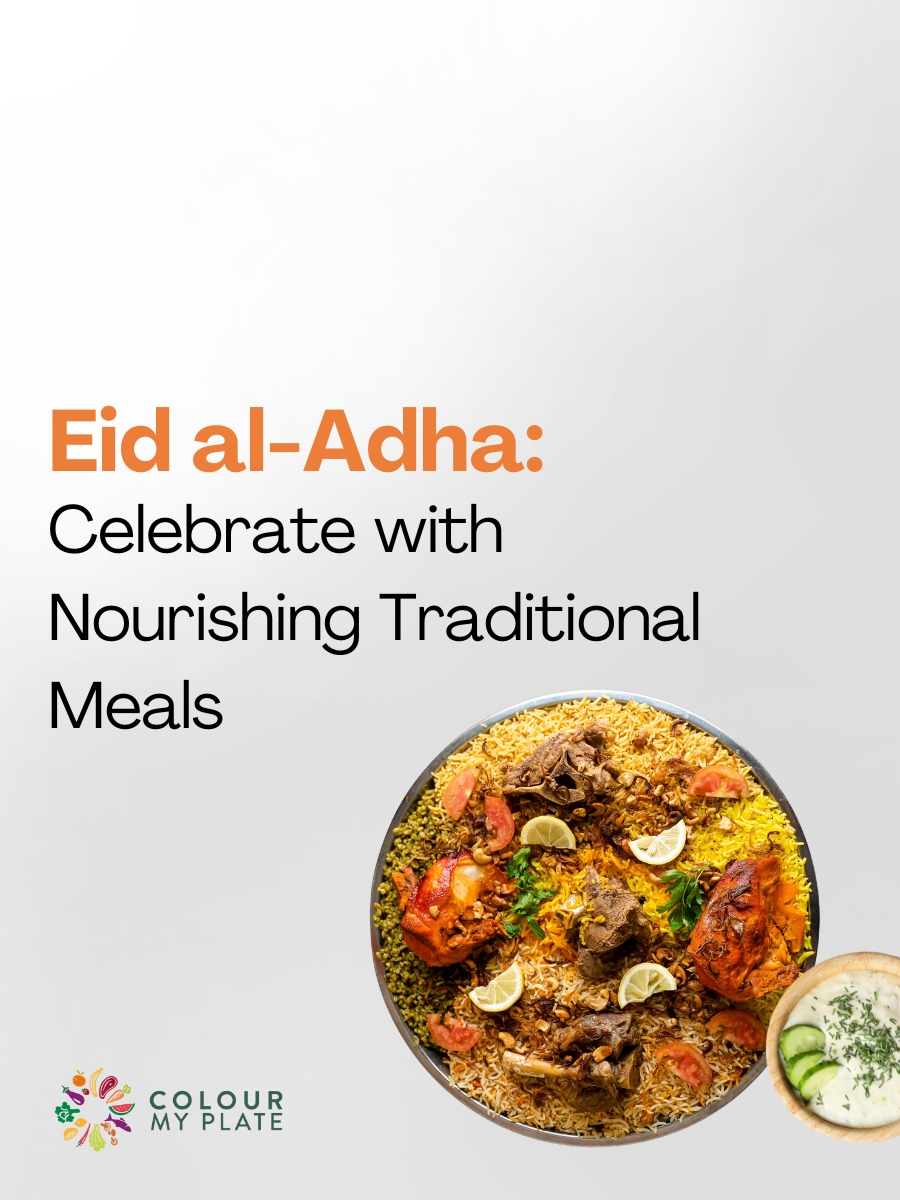
![]() 2 Jun 2025
2 Jun 2025
Eid al-Adha is a time of joy, generosity, and, of course, indulging in delicious traditional meals. The feast often includes rich meats, flavourful rice dishes, and an array of sweet treats. But what if we could keep the celebration nourishing without sacrificing taste? Here’s your guide to planning traditional Eid meals with a healthy twist!
Traditional Eid recipes are often hearty and flavorful, but simple adjustments can make them lighter and more nutritious. Choosing lean cuts of lamb or beef is a great place to start. Instead of frying, grilling or roasting these meats brings out deep flavor while reducing excess oil. It’s also helpful to be mindful of portion sizes. While it’s tempting to indulge in large servings during a festive meal, enjoying smaller portions allows room to savor every bite without overdoing it. Replacing refined grains like white rice with alternatives such as brown rice, quinoa, or whole-grain breads is another easy way to boost fiber intake and support digestion during Eid al-Adha.
The side dishes at an Eid al-Adha table often add richness to the meal, but they can also be an opportunity to introduce more balance. Fresh salads with olive oil and lemon dressing pair beautifully with heavier main courses and provide essential nutrients. Lentil soups or roasted vegetable platters offer hearty yet wholesome starter options that complement traditional flavors. For dips, preparing hummus or yogurt-based sauces at home ensures freshness and avoids preservatives typically found in store-bought varieties.
How food is cooked plays a big role in how nourishing it remains. Grilling meats and vegetables enhances flavor while keeping the need for added fat to a minimum. Steaming vegetables and grains helps retain their nutrients and vibrant colors, making dishes more appealing and health-conscious. For pastries and other baked goods, opting to bake instead of deep fry maintains their comforting taste while reducing unnecessary oils.
No Eid al-Adha celebration feels complete without dessert, and healthier options can be just as satisfying. Naturally sweet ingredients like dates, figs, and fresh fruits make for beautiful and nutrient-dense treats. When sweetening desserts, using honey or maple syrup instead of refined sugar offers a more wholesome alternative. Creating desserts that blend Greek yogurt with almonds or pistachios provides creaminess and crunch, along with the added benefit of protein and healthy fats.
Between flavorful meals and sweet desserts, hydration is especially important during Eid al-Adha. Instead of sugary sodas, serving infused water with mint, lemon, or cucumber adds a refreshing touch. Herbal teas such as chamomile or ginger are also soothing and help with digestion after large meals. For a natural burst of flavor, freshly squeezed juices without added sugar are a festive and healthy alternative.
Eid al-Adha is a time to celebrate, and food is at the heart of it. By making small, thoughtful choices, you can enjoy traditional flavors while keeping meals nourishing and delicious. With wholesome ingredients, smarter cooking techniques, and balanced portions, you can bring health and joy to your Eid table.

We noticed you haven't completed your delivery details.

Your message is sent